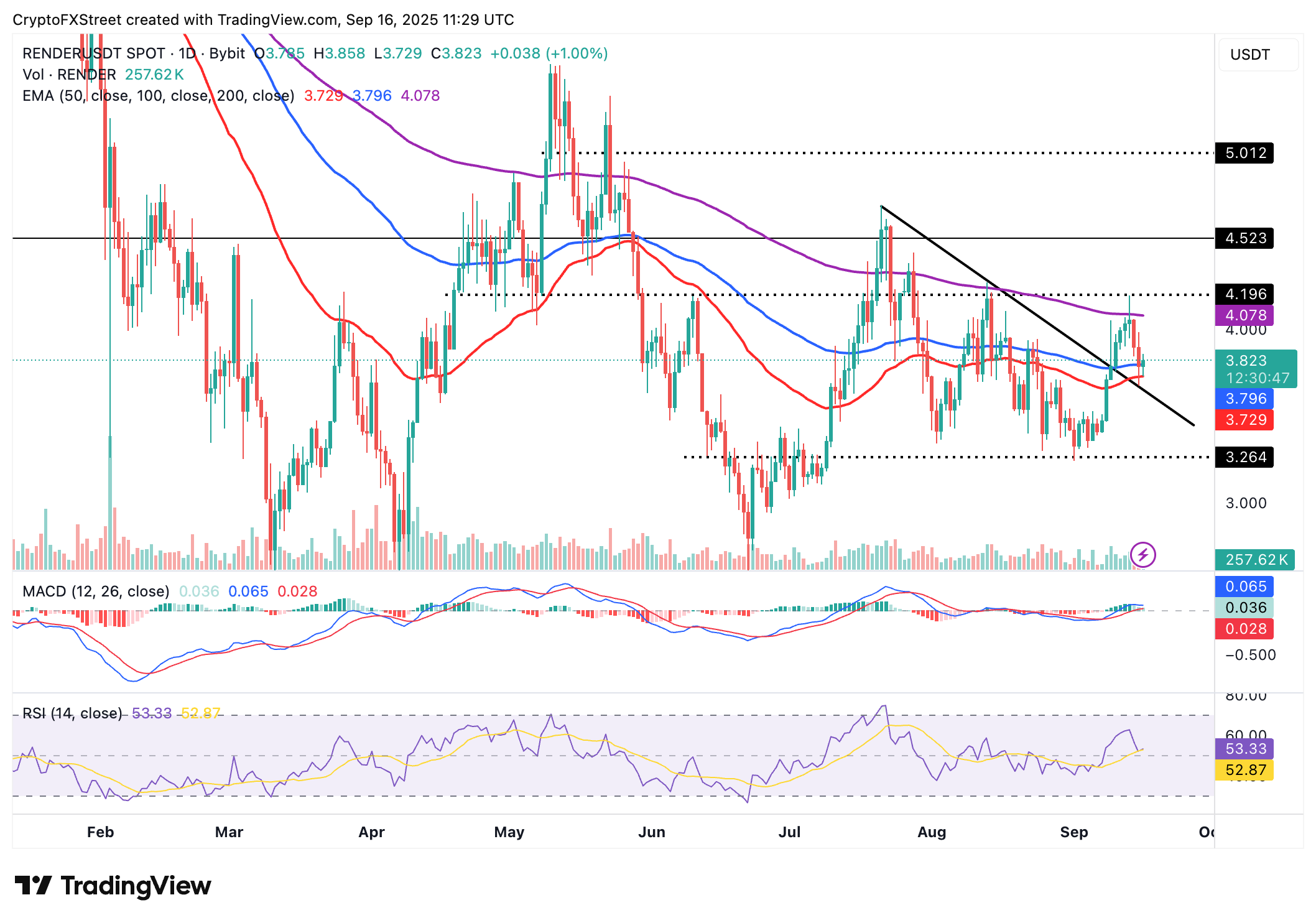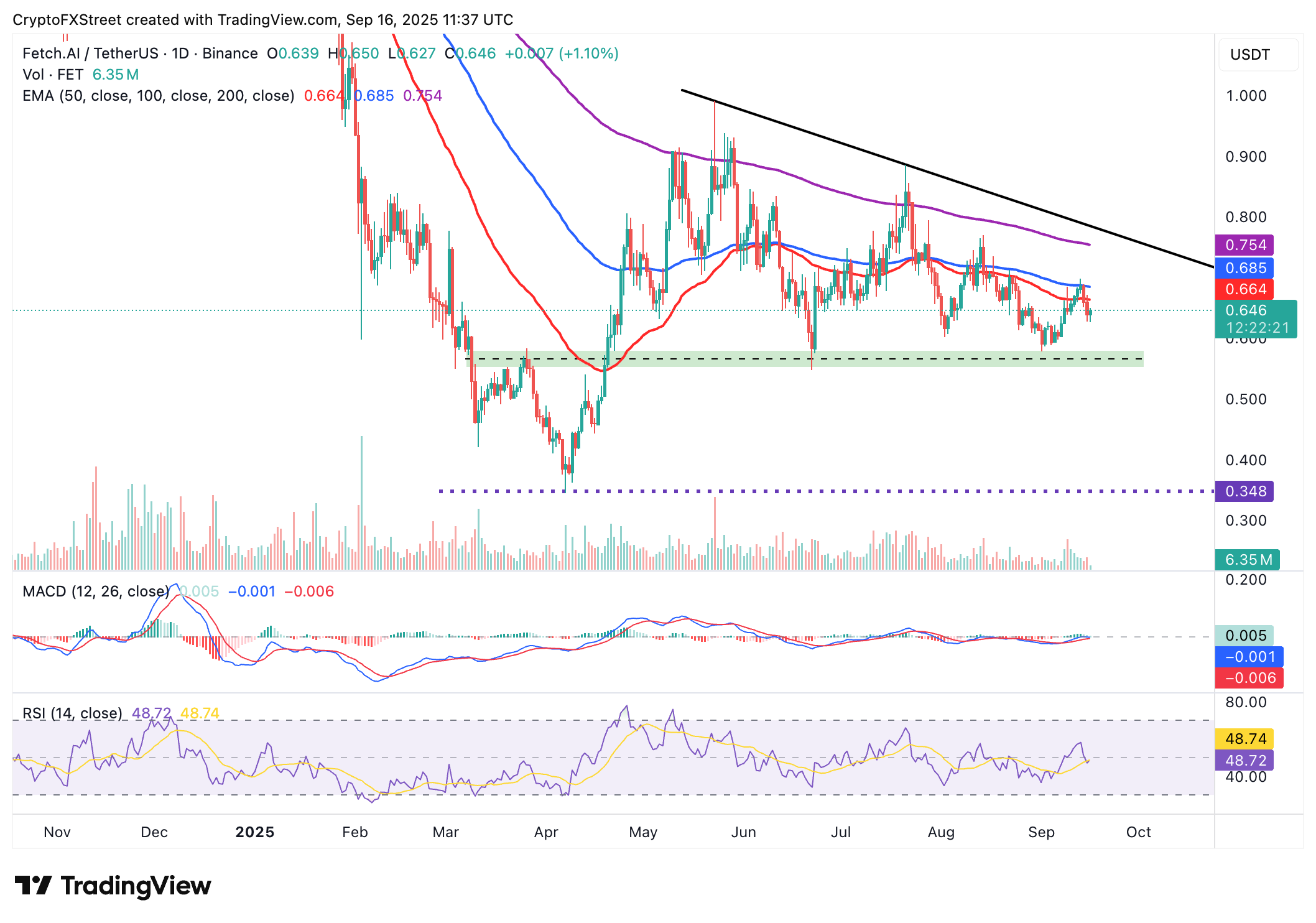Two AI tokens to watch as Ethereum Foundation debuts new AI team
- The Ethereum Foundation announces team to bolster Ethereum as the preferred settlement and coordination layer for AI agents.
- The team’s mandate is to support the AI economy on Ethereum and foster decentralisation.
- Render and FET remain above key support levels as the broader cryptocurrency market eyes a potential mid-week breakout.
The Ethereum Foundation has established a new Artificial Intelligence (AI) team, whose mission is to build the network as the preferred settlement and coordination layer for the emerging sector.
Ethereum Foundation to build a decentralized AI economy
Davide Crapis, the AI lead at the Ethereum Foundation, stated in the announcement on Tuesday that the newly established team has two mandates: To support the development of an AI economy on Ethereum and build a decentralized AI stack that ensures opportunities are open to many projects. The Ethereum Foundation aims to prevent a scenario where a handful of entities dominate the sector.
“We believe Ethereum can be as useful for today’s AI developers as it will be for the sci-fi future. That’s why we’ll work closely with ecosystem projects to accelerate progress and push the boundaries of research and innovation at the intersection of AI and blockchains,” Crapis highlighted on X.
The dAI Team, as described, will work closely with protocol and ecosystem teams at the Ethereum Foundation by linking developers with key resources and providing funding for innovative, public-centered goods and services.
“Ethereum makes AI more trustworthy, and AI makes Ethereum more useful[…]. Ethereum benefits by becoming that layer, and AI benefits by escaping lock-in to a few centralized platforms,” Crapis added.
The foundation is currently working on the ERC-8004 – a standard that will verify the identity of AI agents and assign a trust score to them. This initiative is expected to support the establishment of a neutral, verifiable and censorship-resistant infrastructure.
Projects leveraging the Ethereum network, such as Render (RNDR) and Artificial Superintelligence Alliance (FET), will receive support from the dAI Team to bolster the development of AI that works for the people and ensure humanity flourishes with the technology.
AI tokens to watch: Render and FET offer recovery signs
Ethereum Foundation’s shift toward the intersection of AI and blockchain technology could benefit projects already building on the protocol. As the largest Ethereum-based AI tokens by market capitalisation, RNDR and FET stand to benefit as the dAI Team works to build a neutral, verifiable and censorship-resistant infrastructure.
Render is trading above $3.80, supported by the 100-day Exponential Moving Average (EMA), positioned at $3.79 at the time of writing on Tuesday. The 50-day EMA, which is slightly below it at $3.72, supports RNDR’s bullish potential.
Key indicators to monitor include the Moving Average Convergence Divergence (MACD) and the Relative Strength Index (RSI) on the daily chart. The MACD indicator upholds a buy signal with the blue line above the red signal line.
Investors should consider increasing their exposure if the RSI, presently at 53, remains above the midline and extends the reversal toward overbought territory. Higher RSI readings indicate bullish momentum is building. Key milestones for RNDR include the 200-day EMA resistance at $4.07 and the round-number supply level at $5.00.

FNDR/USDT daily chart
As for FET, bulls are struggling to regain control after losing support at the 50-day EMA around $0.66 and the 100-day EMA at $0.68. With the RSI at 48 in the bearish region, sellers have the upper hand.
Still, the MACD indicator has yet to confirm a sell signal, suggesting that bulls have a chance to assert their control in the short term if the blue MACD line remains above the red signal line.
FET must reclaim its position above the 50-day and 100-day EMAs to validate its potential for recovery. Some of the key short-term targets include a break above the 200-day EMA at $0.75 and the descending trendline resistance, both of which could drive the next bullish phase toward the $1.00 level.

FET/USDT daily chart
A sell signal would manifest if the blue MACD line crosses and closes the day below the red signal line. Tentative support lies in the range of $0.55 and $0.58, which was previously tested on September 1.
Cryptocurrency prices FAQs
Token launches influence demand and adoption among market participants. Listings on crypto exchanges deepen the liquidity for an asset and add new participants to an asset’s network. This is typically bullish for a digital asset.
A hack is an event in which an attacker captures a large volume of the asset from a DeFi bridge or hot wallet of an exchange or any other crypto platform via exploits, bugs or other methods. The exploiter then transfers these tokens out of the exchange platforms to ultimately sell or swap the assets for other cryptocurrencies or stablecoins. Such events often involve an en masse panic triggering a sell-off in the affected assets.
Macroeconomic events like the US Federal Reserve’s decision on interest rates influence crypto assets mainly through the direct impact they have on the US Dollar. An increase in interest rate typically negatively influences Bitcoin and altcoin prices, and vice versa. If the US Dollar index declines, risk assets and associated leverage for trading gets cheaper, in turn driving crypto prices higher.
Halvings are typically considered bullish events as they slash the block reward in half for miners, constricting the supply of the asset. At consistent demand if the supply reduces, the asset’s price climbs.

